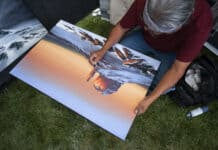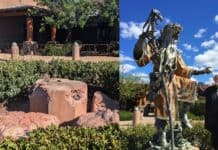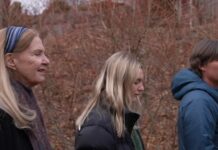Only 32 watercolors by 22 different artists made the cut to be included in the upcoming Northern Arizona Watercolor Society’s 14th annual Members’ Spring Exhibition.
The show employed Dick Phillips, a member of “Who’s Who in American Art” as juror of the selections and awards, and features artists from Sedona, Cottonwood, Camp Verde and Flagstaff, as well as from throughout other areas of Arizona.
Phillips is a full-time professional artist who studied with California artists Robert E. Wood and Milford Zornes, and whose work has received major awards in national and regional juried competitions.
By Susan Johnson
Only 32 watercolors by 22 different artists made the cut to be included in the upcoming Northern Arizona Watercolor Society’s 14th annual Members’ Spring Exhibition.
The show employed Dick Phillips, a member of “Who’s Who in American Art” as juror of the selections and awards, and features artists from Sedona, Cottonwood, Camp Verde and Flagstaff, as well as from throughout other areas of Arizona.
Phillips is a full-time professional artist who studied with California artists Robert E. Wood and Milford Zornes, and whose work has received major awards in national and regional juried competitions.
Opening with an artists’ reception Friday, May 16, from 5 p.m. to 8 p.m., the exhibit will run through Thursday, June 5, at the Manheim Gallery at 747 N. Main Street in Cottonwood.
“This is the finest art of Northern Arizona’s watercolorists,” said Patt Manheim, owner of the gallery. “I know of some people who plan their visits to the Southwest to coincide with this show.”
This is the second year that Manheim has hosted the event.
“Last year, between 160 and 170 people attended the opening reception and nearly 300 additional guests visited during the length of the show,” Manheim said. “Our local community wants the artists to know that they are valued and supported.”
Although all of the pieces are for sale through the gallery, equally important to the artists is the exposure and the prestige of being selected.
“This is a very strong show due to its extremely tight requirements,” Manheim said. “Being selected changes an artist’s status and carries with it additional recognition.”
Two of the artists selected by Phillips for the exhibit are Lynn Overend of Flagstaff and Peter Nelson of Sedona.
One of two of Overend’s works that will hang in the exhibit is titled, “Tuscan Temptations,” a still life that celebrates wine.
Although Overend’s father was a commercial artist and her heart yearned to do art, she first worked for many years as a counselor at Paradise Valley High School near Phoenix.
Once she took up watercolors, there was no going back.
“I tried using oils once, but I went right back to watercolors,” Overend said. “I like the spontaneity of it and starting with clean, white paper.”
A juried member of the society for seven years, Overend is also a juried member of the Arizona Watercolor Association.
“Considering the quality of the art of the NAWS [society] membership, it’s an incredible honor to be chosen,” Overend said.
The Flagstaff artist feels that the society’s membership is able to support one another because of the diversity in their work.
“We all have our own style and we’ve all been painting long enough that I never sense any animosity among the members,” Overend said. “There’s so much variety here. Phillips has put together a wonderful show.”
Nelson moved to Arizona in 1980, but his heart and his eye for capturing light and architectural lines remain firmly in his native New England, where he spends summers painting on Monhegan Island off the coast of Maine.
Lighthouses, skiffs, buoys and saltbox homesteads, foreign to the Southwest, populate his portfolio, delighting anyone who’s spent time near the rocky shores of the Atlantic Ocean by conjuring its colors and style.
Among painters, watercolors are considered the most difficult medium, much less forgiving than oils.
“In an oil painting, if you make a mistake, you can just slap more oils over the top of it,” Nelson said. “Vermeer was famous for doing that and, using an ex-ray, you can see three or four layers underneath. But in a watercolor you can see if it’s been purely done or if it’s been fixed.”
Technology has helped the medium gain converts and collectors, offering acid-resistant papers and improved pigments.
The difference in pricing between oils and watercolors can also make a difference.
“For those who want very fine art, painters like Wyeth excluded, of course, watercolors can be much more affordable,” Manheim said.
Susan Johnson can be reached at 282-7795, Ext. 129 or e-mail sjohnson@larsonnewspapers.com





















